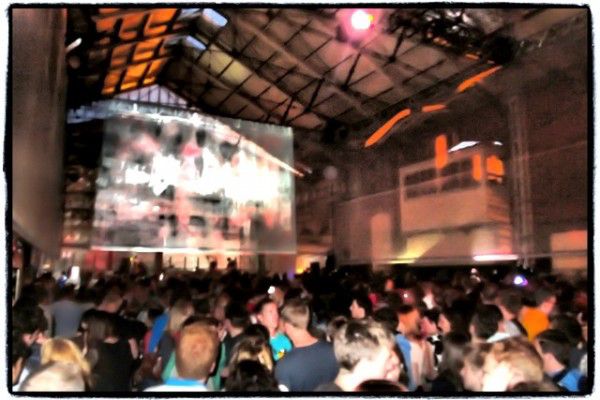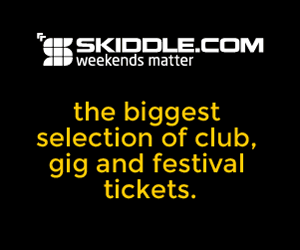REVIEW: SEE NO EVIL’S MAIL, MAPS AND MOTION IN BRISTOL (17/08/12)
The Passenger Shed, one of Bristol’s most historic and iconic buildings, was transformed for one night only into a multi-directional theatre to host a truly spectacular performance which brought together world renowned musicians, film makers, artists and media fans alike through a selection of one-off commissions and collaborations expertly curated by Watershed. The rich history of Britain’s Enterprise Zone was explored through the phenomenal film archive of the General Post Office Film Unit through themes of industry, modernity, technology and communication plus the rich material heritage of Temple Meads.
The performance was comprised of three shows, the first being a screening of the 1936 documentary Night Mail, a short black and white film directed by Harry Watt and Basil Wright, a film known for both its musical score and poetic narration. The second part of the show shortly followed with another concise film once again made for the General Post Office Film Unit from 1937. Trade Tattoo, directed by Len Lye used vibrant colour animation with complementary audio to distinguish the rhythm of a typical working day with an underlying key message that the secret of staying in rhythm is to “post early”.
The second part of the evening’s entertainment was introduced with a cutting edge visual performance by BEAM. Rythym of Work-a-Day Britain included a specially assembled band led by Scott Hendy of Malachai/Boca45 while joined on stage by artist, Inkie (the curator of Bristol’s See No Evil weekend) who created live art on an iPad which was simultaneously projected onto the display screens.
The Finale of the exhibition presented Mail, Maps and Motion devised by guitarist Adrian Utley (guitarist from Portishead) and Joanie Lemercier (AntiVJ) plus a number of guest performers on electronic percussion and synthesisers including Will Gregory (of Goldfrapp). The screens once again synchronised perfectly with the music across the Passenger Shed leaving the whole audience breathless.
The finale of the show exceeded all expectations and in particular, displayed the power and captivity possible from the collaboration of music, rhythm and visual imagery both from the 1930’s through to the present day.
Words and photo: James Cantle




